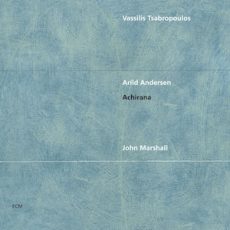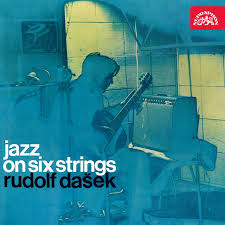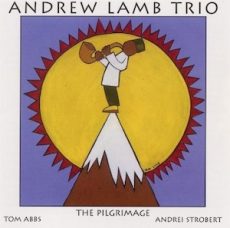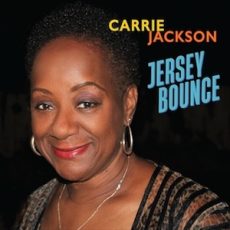
Daily Dose Of Jazz…
John Stanley Marshall was born August 28, 1941 in Isleworth, Middlesex , England and worked with various jazz and rock bands and musicians, among them J. J. Jackson, Allan Holdsworth, Barney Kessel, Alexis Korner, Graham Collier, Michael Gibbs, Arthur Brown, Keith Tippett, Centipede, Jack Bruce, John McLaughlin, Dick Morrissey, Hugh Hopper, Elton Dean, John Surman, Charlie Mariano, John Abercrombie, Arild Andersen, and Eberhard Weber’s Colours.
From 1999, he worked with former Soft Machine co-musicians in several Soft Machine-related projects like SoftWare, SoftWorks and Soft Machine Legacy. He toured as a member of the band, which operated under the name Soft Machine again, from 2015 to 2023.
Drummer John Marshall, was a founding member of Ian Carr’s jazz rock band Nucleus, and Eberhard Weber’s Colours, died on September 16, 2023, at the age of 82.
More Posts: bandleader,guitar,history,instrumental,jazz,music

Daily Dose Of Jazz…
Rudolf Dašek was born on August 27, 1933 in Prague, Czech Republic and studied at the Prague Conservatory from 1962 to 1966 with Milan Zelenka.
He was a member of the band SHQ led by Karel Velebný, then followed with several bands for the rest of the 1960s which included a trio with George Mraz, a trio with Lou Bennett, the quintet Jazz Cellula led by Ladislav Déczi, an orchestra conducted by Gustav Brom, and the Prague Radio Symphony Orchestra.
By the end of the decade Rudolf was working for two years in the house band at the Blue Note Club in Berlin, Germany. In the early 1970s he formed the duo System Tandem with Jiří Stivín. He also worked with guitarists Philip Catherine, Christian Escoudé, and Toto Blanke.
Guitarist Rudolf Dašek, who played solo performances in the decades following the Seventies, died on February 1, 2013.
More Posts: bandleader,guitar,history,instrumental,jazz,music

Daily Dose Of Jazz…
Andrew Lamb was born on August 26, 1958 in Clinton, North Carolina and raised in Chicago, Illinois and South Jamaica, Queens, New York. Having studied with AACM charter member Kalaparusha Maurice McIntyre, he came into New York City’s avant-garde community during the 1970s, becoming an active presence in the Bedford-Stuyvesant arts world and winning a Brooklyn Arts Council grant.
1994 saw him leading a session for Delmark, composing all the pieces on Portrait in the Mist, which featured vibraphonist Warren Smith, bassist Wilber Morris, and drummer Andrei Strobert. Lamb has since recorded duets with Warren Smith, and made a trio recording with Eugene Cooper and Andrei Strobert.
In 2003 released Pilgrimage on CIMP with Tom Abbs and Andrei Strobert, and with his group The Moving Formas released Year of the Endless Moment. As a leader he has recorded five albums beginning with 1994’s Portrait In The Mist, with his latest The Casbah Of Love in 2018 on Birdwatcher Records
Saxophonist and flautist Andrew Lamb, who leads his own ensembles and has been a part of Alan Silva as well as Cecil Taylor’s big bands, continues to perform and record.
More Posts: bandleader,flute,history,instrumental,jazz,music,saxophone

Daily Dose Of Jazz…
Carrie Jackson was born on August 25, 1959 in Newark, New Jersey and began her musical career when she was 6 years old singing in the children’s choir at Mount Calvary Baptist Church in Newark and is a product of the city’s Public School system, attending Peshine Avenue Elementary School, and Weequahic H.S.
She studied piano and voice with teacher, composer and arranger Howard “Duke” Anderson. Under his tutelage she learned the music business and became an accomplished seasoned singer as well as band leader. Coming into her own as a young adult, Jackson worked as a featured vocalist with Anderson’s Big Band. She also studied voice with Inez Mc Clendon, Nadine Herman and Winston Hughes at NCSA in Newark.
Carrie rekindles thoughts of America’s great jazz history, and attributes her vocal style of singing to her mentors, the Great Ladies of Jazz, Sarah “Sassy” Vaughan, Ella Fitzgerald, Billie Holiday, Dinah Washington, Nancy Wilson, and Carmen McRae. As a soloist, or with her Jazzin’ All Star Band, Carrie swings and performs the music of Duke Ellington, Count Basie, Lionel Hampton, Louis “Satchmo” Armstrong, Miles Davis, John Coltrane, Dizzy Gillespie, and musical selections songs from the Great American Song Book.
Jackson has been a featured artist in Women in Jazz, Ain’t Misbehavin’, and the musical review 49th Street Jazz, a tribute to Eubie Blake, Duke Ellington, Billie Holiday, Alberta Hunter. She is President/CEO of Mo-Jazz LLC, has toured both Europe and the United States and has fronted several orchestras.
Vocalist Carrie Jacksom continues to perform, tour and record with a variety of musicians, a list too long to document here.
More Posts: bandleader,history,instrumental,jazz,music,vocal

Daily Dose Of Jazz…
Joni Janak was born August 24 in 1944 in Amarillo, Texas and raised in a musical family. He was taught singing, dancing and piano at the Amarillo College of Music. She gave public recitals from the age of eight and had her first professional singing job at thirteen. Receiving a vocal scholarship to Texas Tech University in Lubbock, he eventually returned to Amarillo and sang with many different bands and with the Amarillo Symphony Orchestra when he was 22.
Heading to Houston, Texas she sang in the Carriage Club at the Sheraton Lincoln Hotel until 1969 when she moved to Denver, Colorado, furthering her career. While there she sang with local and visiting jazz musicians, among them Dale Bruning, Ellyn Rucker, Phil Urso, Peanuts Hucko, Bobby Greene, Todd Reid, the Hot Tomatoes Jazz Band, Howard Davis and Jim Riley.
Meeting Carl Fontana while she worked the El Chapultepec he invited her to Las Vegas, Nevada to work with him. In Vegas she worked with Carson Smith, Tom Montgomery, Vinnie Tano, Bill Berry, Herbie Phillips and Bill Watrous. She also sang on a jazz cruise with the Johnny Carson Tonight Show Allstars, played jazz festivals and concerts
Vocalist Joni Janak continues to perform and record.
More Posts: bandleader,history,instrumental,jazz,music,vocal


